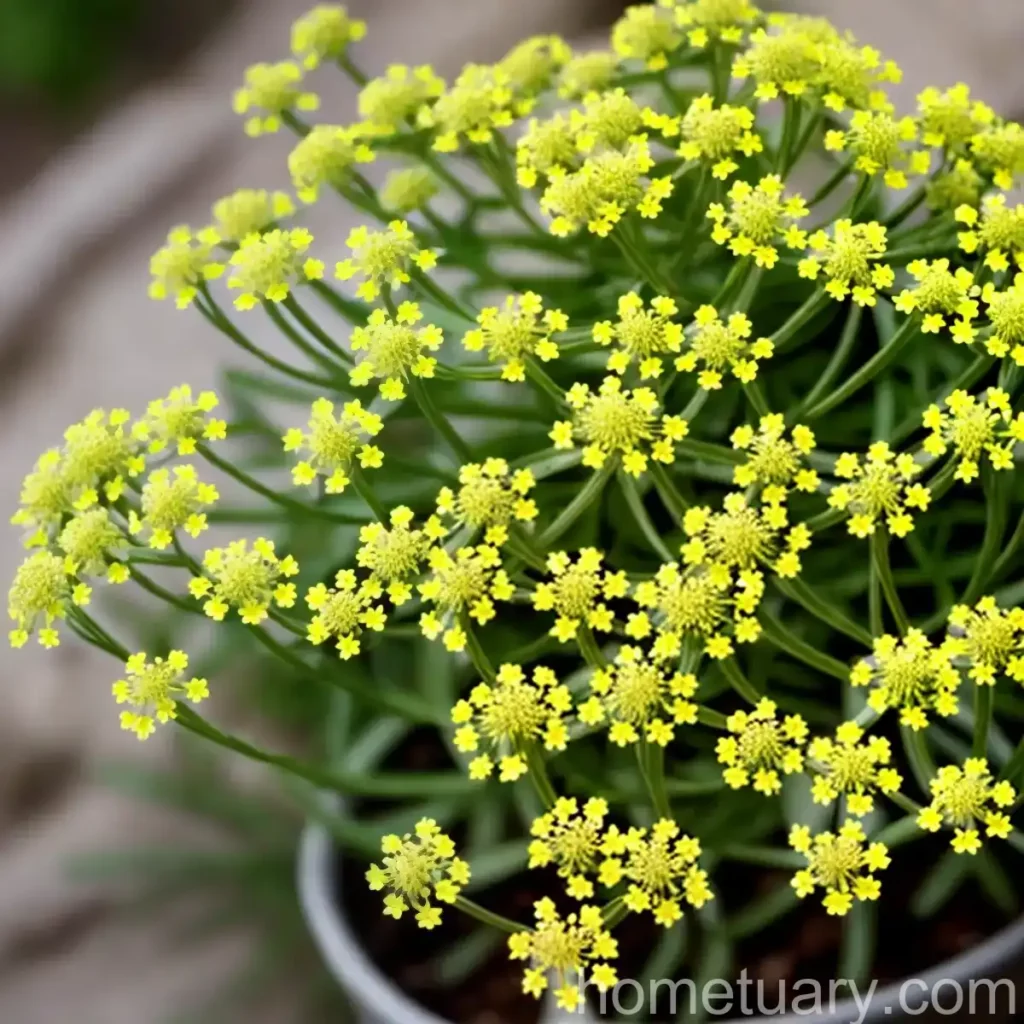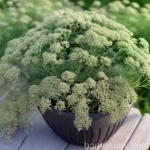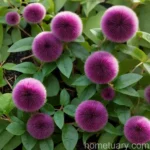Yellow Spring Bedstraw (Galium verum): A Comprehensive Guide
As a plant scientist and enthusiast, I am incredibly passionate about exploring the intricate details of various plant species. In this comprehensive guide, I will delve into the captivating world of yellow spring bedstraw (Galium verum). With a focus on its culture, uses, care requirements, and its significance in ecology and traditional practices, this article aims to provide valuable insights for both novice gardeners and seasoned horticulturists.
What is Yellow Spring Bedstraw (Galium verum)?
Native to Europe, Asia, and North Africa, Galium verum, commonly known as yellow spring bedstraw, is a perennial plant belonging to the Rubiaceae family. Also referred to as Lady’s Bedstraw, this delightful herbaceous plant is adorned with clusters of vibrant yellow flowers, creating a visually enchanting spectacle in natural landscapes and gardens alike. This species is renowned for its versatile uses, ranging from traditional herbal remedies and ecological enhancements to its decorative presence in ornamental gardens.
Key Takeaways – Yellow Spring Bedstraw (Galium verum)
Before delving deeper into the various aspects of yellow spring bedstraw, let’s highlight some key takeaways. By focusing on the following sections, we can gain a comprehensive understanding of this captivating plant:
- Culture
- Uses
- Care Requirements
- Significance in Ecology and Traditional Practices
Now, let’s delve into each of these aspects to unravel the captivating world of yellow spring bedstraw.
Culture
Understanding the cultural requirements of yellow spring bedstraw is pivotal for ensuring its optimal growth and development. Various factors, such as watering, sunlight exposure, soil composition, and fertilization, play a crucial role in nurturing this charming plant.
Water
Yellow spring bedstraw thrives in well-drained soil. While it exhibits moderate drought tolerance once established, regular watering is essential during the initial stages of growth. Providing consistent moisture, especially during dry spells, promotes healthy foliage and prolific flowering.
Sunlight
This species flourishes in full sun to partial shade, making it adaptable to diverse garden settings. When cultivated in regions with scorching summers, partial shade can shield the plant from excessive heat, ensuring its vitality and vigor.
Fertilizer
Galium verum generally thrives in nutrient-rich soil. Prior to planting, incorporating organic matter into the soil can significantly enhance its fertility. During the growing season, applying a balanced fertilizer at a moderate rate can further augment the plant’s overall health and blooming prowess.
Soil
With a preference for slightly alkaline to neutral soil, yellow spring bedstraw exhibits remarkable adaptability to various soil types. Loamy or sandy soils with good drainage capabilities are especially favorable for nurturing this species.
Uses
The diverse uses of yellow spring bedstraw span traditional remedies, ecological restoration, and ornamental gardening. Each facet underscores the plant’s inherent versatility and cultural significance.
-
Traditional Remedies: In traditional herbal medicine, yellow spring bedstraw has been utilized for its potential medicinal properties, with applications ranging from teas to topical treatments. Its historical usage in herbal remedies is a testament to its perceived therapeutic benefits.
-
Ecological Restoration: Yellow spring bedstraw plays a pivotal role in ecological restoration, particularly in the context of enhancing biodiversity and restoring native habitats. Its nectar-rich blooms attract various pollinators, contributing to the sustenance of local ecosystems.
-
Ornamental Gardening: As an ornamental plant, yellow spring bedstraw adds a touch of vibrant elegance to gardens and landscapes. Its luscious yellow flowers and delicate foliage make it a captivating addition to wildflower meadows, cottage gardens, and naturalistic landscapes.
Care Requirements
The optimal care of yellow spring bedstraw encompasses essential facets such as pruning, propagation, and container cultivation, all of which contribute to the plant’s overall vitality and aesthetic appeal.
Pruning
Pruning is instrumental in maintaining the health and visual appeal of yellow spring bedstraw. Regular deadheading of spent flowers not only prolongs the blooming period but also prevents self-seeding, thereby regulating its spread in gardens. Additionally, periodic trimming of overgrown foliage promotes a compact growth habit, enhancing the plant’s aesthetic allure.
Propagation
The propagation of yellow spring bedstraw can be accomplished through both seeds and division. Sowing seeds in well-prepared soil during the spring or fall facilitates the establishment of new plants. Alternatively, division of mature clumps in early spring rejuvenates existing plantings while facilitating the expansion of its presence in the garden.
Container Cultivation
For gardening enthusiasts with space limitations, yellow spring bedstraw can be cultivated in containers, provided that the appropriate growing conditions are maintained. Selecting a well-draining potting mix and ensuring adequate sunlight and moisture can foster the successful cultivation of this species in containers.
Popularity
Yellow spring bedstraw has garnered notable popularity among gardeners, herbalists, and conservationists due to its diverse uses, captivating appearance, and ecological significance. Its enduring allure transcends conventional garden settings, resonating with individuals keen on fostering sustainable landscapes and preserving traditional herbal practices.
Common Diseases
While yellow spring bedstraw is relatively resilient, it may be susceptible to certain diseases and pests that can impede its growth and vitality. Vigilance in identifying and addressing these issues is crucial for safeguarding the plant’s well-being.
Disease Diagnosis
Common diseases that may affect yellow spring bedstraw include powdery mildew and rust. Powdery mildew manifests as a white, powdery coating on the foliage, while rust appears as orange or reddish-brown pustules on leaves and stems. Timely intervention through the application of appropriate fungicides and cultural practices can mitigate the impact of these diseases on the plant.
Common Pests
In addition to diseases, yellow spring bedstraw may also face challenges posed by pests such as aphids and spider mites. These sap-sucking insects can diminish the plant’s vigor and compromise its aesthetic appeal. Implementing integrated pest management strategies, including the introduction of natural predators and the use of horticultural oils, can effectively manage these pest infestations.
Botanist’s Tips
Botanists and horticulturists impart valuable insights on the cultivation and conservation of yellow spring bedstraw, advocating for its incorporation into diverse ecological and horticultural initiatives.
-
Ecological Significance: Recognizing the ecological significance of yellow spring bedstraw, botanists emphasize its potential in fostering pollinator populations and enhancing biodiversity in both wild and cultivated landscapes.
-
Cultural Preservation: Botanists underscore the importance of preserving the cultural and historical uses of yellow spring bedstraw, advocating for its inclusion in ethnobotanical conservation efforts and traditional herbal practices.
Fun Facts
Uncovering intriguing facts about yellow spring bedstraw adds an element of fascination to its botanical profile, shedding light on its folklore, ecological interactions, and aesthetic appeal.
-
Folklore and Mythology: In folklore and mythology, yellow spring bedstraw has been associated with various legends and traditions, capturing the imagination of storytellers and herbalists throughout history.
-
Aromatic Properties: The flowers and foliage of yellow spring bedstraw possess a subtle, sweet scent, contributing to its sensory appeal and attracting pollinators to its nectar-laden blooms.
Links to External Resources
Enrich your understanding of yellow spring bedstraw by exploring the following external resources:
- Royal Horticultural Society – Galium verum
- Plants for a Future – Galium verum
- United States Department of Agriculture – Plant Profile: Galium verum
- The Wildlife Trusts – Lady’s Bedstraw
- Botanical Society of Britain and Ireland – Lady’s Bedstraw (Galium verum)
- Ethnobotany and Medicinal Plant Resources – Galium verum
- Flora of Northern Ireland – Galium verum
- The Herb Society – Lady’s Bedstraw
By exploring these resources, you can gain deeper insights into the cultural, ecological, and horticultural dimensions of yellow spring bedstraw.
In conclusion, yellow spring bedstraw, with its resplendent blooms, rich cultural heritage, and diverse ecological roles, exemplifies the inherent beauty and significance of plant species in our natural world. As we continue to appreciate and nurture the multifaceted attributes of this captivating plant, we contribute to the preservation of botanical diversity and the perpetuation of traditional knowledge, fostering a harmonious coexistence between plants and humanity.
Let’s celebrate the enchanting allure of yellow spring bedstraw and embrace its enduring legacy in gardens, landscapes, and the realms of culture and ecology.















